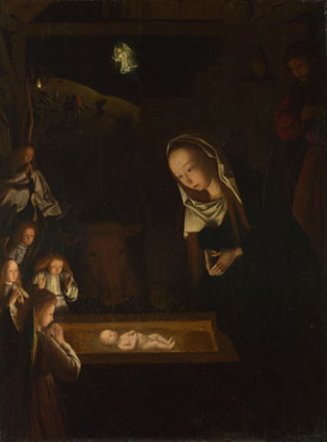This might be the season of goodwill to all men, but it is a lousy month for farm animals. Killed, hung, cured, spiced, plucked, stuffed, roasted, their role in the Christmas festivities is now more or less restricted to satisfying human appetites. But it was not always quite like that. The paintings of the Nativity reproduced on so many modern Christmas cards demonstrate that animals once occupied an important place in people's minds, as well as their stomachs, at this time of year.
Two animals in particular: the ox and the ass, said to have accompanied Joseph and Mary on the flight from Egypt. They are almost always present, in Adorations or Nativities, but not much regarded; even the most beetle- browed art historical commentators tend to pass them over as insignificant, perennial details. Spare a thought for the bit players, the eternal spear-carriers, of the Nativity story. They have their own histories and their own not entirely straightforward backgrounds. Their behaviour can be unpredictable. The ox and the ass are often not as innocent, and certainly not as dumb, as they look.
One of the National Gallery's most beautiful early Netherlandish paintings, Geertgen tot Sint Jans's quietly mystical The Nativity, at Night, abbreviates the ass and the ox to a pair of large kind animal faces looming out of the darkness just above the crib in which the Christ child lies. His divinity is manifest in the light that radiates from his body, but also in the spontaneous worship he inspires in the two animals. They function, in Geertgen's picture, as a sort of bestial chorus, and their wide-eyed, solicitous, distinctly non-bestial response to the holy Infant subtly underlines the extraordinary nature of the event taking place - a less strident but no less pointed affirmation of...

The not so dumb animals
22-12-1992

